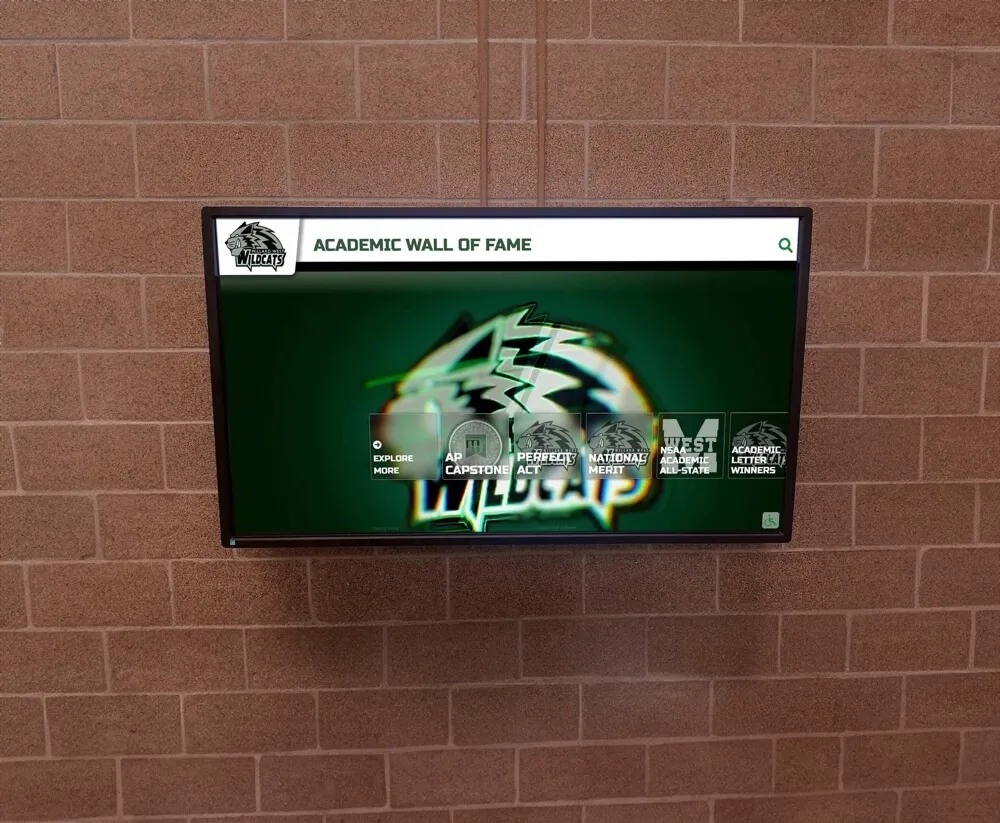Key Takeaways
Discover how to create an impactful scholastic wall of honor that celebrates academic achievement, inspires students, and builds a culture of excellence through modern digital recognition displays.
Understanding the Scholastic Wall of Honor Concept
Before implementing recognition systems, educational institutions must understand what scholastic walls of honor are, why they matter, and how they contribute to broader educational missions beyond simple acknowledgment.
Defining Scholastic Recognition
A scholastic wall of honor systematically celebrates academic achievement, intellectual contributions, and scholarly excellence within educational communities. Unlike athletic halls of fame focusing on sports accomplishments or general recognition programs celebrating diverse achievements, scholastic walls of honor specifically honor intellectual pursuits including academic grades and grade point averages, standardized test achievements, subject-specific excellence, academic competition success, research and publication accomplishments, and honors society membership and leadership.
The “scholastic” designation emphasizes the intellectual and academic nature of recognized achievements, distinguishing these programs from broader recognition that may include athletics, arts, service, or character. However, many institutions implement comprehensive recognition systems that celebrate scholastic achievement alongside other forms of excellence, creating balanced cultures valuing multiple pathways to distinction.

The Educational Psychology Behind Academic Recognition
Research in educational psychology reveals multiple mechanisms through which scholastic recognition influences student motivation, behavior, and academic identity development that extend far beyond simple acknowledgment.
Motivation and Goal-Setting: Visible recognition of academic achievement creates concrete targets students can pursue. When schools clearly display honor roll recipients, subject award winners, or academic competition champions, students develop specific aspirational goals beyond vague intentions to “do well in school.” Research consistently demonstrates that specific, achievable goals enhance motivation and performance more effectively than general aspirations.
Social Learning and Role Models: Students learn vicariously by observing peers who receive recognition. When classmates earn acknowledgment for academic accomplishments, observers internalize that similar achievements are possible and valued. This social learning proves particularly powerful during adolescence when peer influence significantly shapes attitudes, behaviors, and identity development.
Academic Identity Formation: Repeated recognition helps students internalize academic identities as learners, scholars, or intellectually capable individuals. These internalized identities influence future academic choices, effort investment, and responses to challenge. Recognition contributes to whether students develop self-concepts as “good at school” or not—perceptions with lasting implications for educational trajectories.
Institutional Culture Communication: Recognition patterns communicate what institutions genuinely value regardless of stated missions. Students, families, and staff pay close attention to who receives celebration and why, learning powerful lessons about institutional priorities. Balanced scholastic recognition systems demonstrate that intellectual achievement matters as much as athletics or other pursuits.
Essential Components of Effective Scholastic Recognition Programs
Exceptional scholastic walls of honor share common features ensuring they serve educational objectives effectively while maintaining credibility, fairness, and motivational power across years of implementation.
Comprehensive Achievement Categories
The most effective scholastic recognition systems celebrate diverse forms of academic excellence rather than focusing narrowly on single metrics like GPA or test scores alone.
Academic Performance Recognition:
- Valedictorians and salutatorians representing highest cumulative achievement
- Honor roll recipients maintaining strong grade point averages
- Dean’s list members exceeding rigorous academic thresholds
- Perfect attendance combined with strong academic standing
- Most improved students demonstrating significant academic growth
Standardized Achievement:
- National Merit Scholars and Commended Students
- AP Scholars earning distinction through Advanced Placement examinations
- Presidential Scholars receiving national recognition
- SAT/ACT achievement awards for exceptional testing performance
- College Board Recognition Programs honoring diverse academic excellence
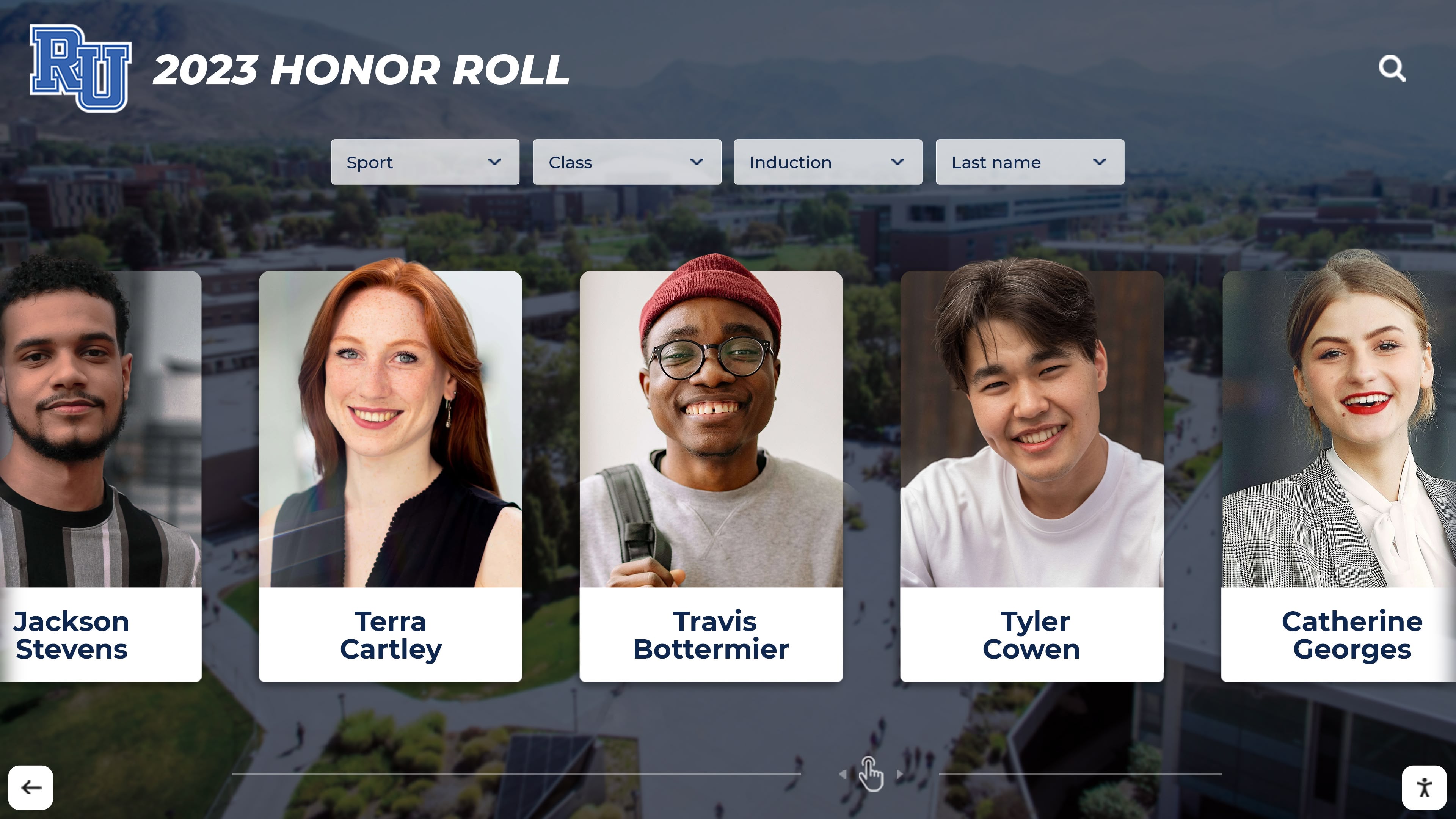
Subject-Specific Excellence:
- Departmental awards for mathematics, science, English, history, and languages
- Outstanding achievement in specialized disciplines
- Excellence in elective subjects and specialized programs
- Advanced coursework completion and mastery
- Subject-specific competition success
Academic Competition Achievements:
- Science Olympiad medals at regional, state, and national levels
- Mathematics competition distinctions (AMC, AIME, MATHCOUNTS)
- Academic Bowl and Quiz Bowl championships
- Spelling Bee and Geography Bee accomplishments
- Debate, forensics, and Model UN recognition
Understanding comprehensive academic achievement categories helps institutions design recognition systems that celebrate excellence across the full spectrum of intellectual pursuits.
Fair and Transparent Selection Criteria
Credibility depends on selection processes perceived as fair, transparent, and consistently applied across all student populations without bias or favoritism.
Clear Written Standards: Document specific criteria for each recognition category including GPA thresholds for honor roll designations, minimum scores for testing achievements, competition placement requirements for recognition, cumulative credit or course completion standards, and handling of special circumstances or exceptions.
Transparent Communication: Publish recognition criteria prominently through student handbooks, school websites, academic guidebooks, classroom posters, and parent communications. Students and families should understand exactly what achievements qualify for recognition and how selections occur.
Diverse Selection Committees: When subjective judgment enters recognition decisions, ensure selection committees include faculty from multiple departments, administrators representing institutional priorities, counselors understanding diverse student circumstances, and potentially student representatives for secondary schools. Committee diversity ensures balanced perspectives and reduces bias.
Regular Equity Reviews: Monitor recognition patterns systematically across demographics, academic programs, and student subgroups to identify potential inequities. When data reveals certain populations consistently receive recognition at dramatically different rates, investigate causes and adjust processes to ensure all students have realistic pathways to acknowledgment.
Educational institutions focused on inclusive recognition approaches create systems where diverse student populations see themselves reflected in honored achievements rather than feeling systematically excluded.
Modern Display Technology Enhancing Recognition Impact
Traditional scholastic recognition typically featured brass plaques, printed certificates, or static bulletin boards with inherent limitations in capacity, updateability, and engagement. Contemporary digital recognition technology transforms academic celebration from transient acknowledgment into dynamic, engaging experiences.
Advantages of Digital Scholastic Recognition:
- Unlimited capacity eliminating forced choices about which achievements to honor
- Instant content updates without fabrication delays or physical installation costs
- Rich multimedia profiles with photos, videos, and detailed achievement narratives
- Interactive search enabling students to find themselves or classmates immediately
- Web accessibility extending recognition beyond those physically visiting campuses
- Comprehensive analytics tracking engagement and recognition effectiveness
- Lower long-term costs compared to ongoing plaque fabrication expenses

Solutions like Rocket Alumni Solutions provide purpose-built platforms specifically designed for educational recognition, offering intuitive content management that non-technical staff can operate independently while creating engaging interactive experiences that capture student attention more effectively than static displays.
Many institutions discover that digital recognition displays offer the flexibility to showcase unlimited academic achievements while maintaining professional presentation quality and easy updates that traditional physical displays cannot match.
Strategic Implementation of Scholastic Walls of Honor
Successful academic recognition results from systematic planning addressing organizational objectives, budget realities, stakeholder engagement, and long-term sustainability requirements.
Phase 1: Planning and Needs Assessment (Weeks 1-4)
Begin implementation by understanding current recognition state and defining clear objectives aligned with institutional educational missions.
Current State Analysis:
- Inventory existing recognition programs and display methods
- Document which students receive current acknowledgment and identify gaps
- Assess physical space available or need for digital alternatives
- Evaluate stakeholder satisfaction through surveys of students, families, and faculty
- Review recognition patterns for potential equity concerns
Objective Definition:
- Establish clear goals: improving student motivation, celebrating excellence, inspiring achievement
- Define measurable outcomes: academic performance trends, student engagement, application quality
- Identify key stakeholders for planning involvement: faculty, administrators, students, families
- Determine budget parameters for initial implementation and ongoing operation
- Create timeline for design, implementation, and launch
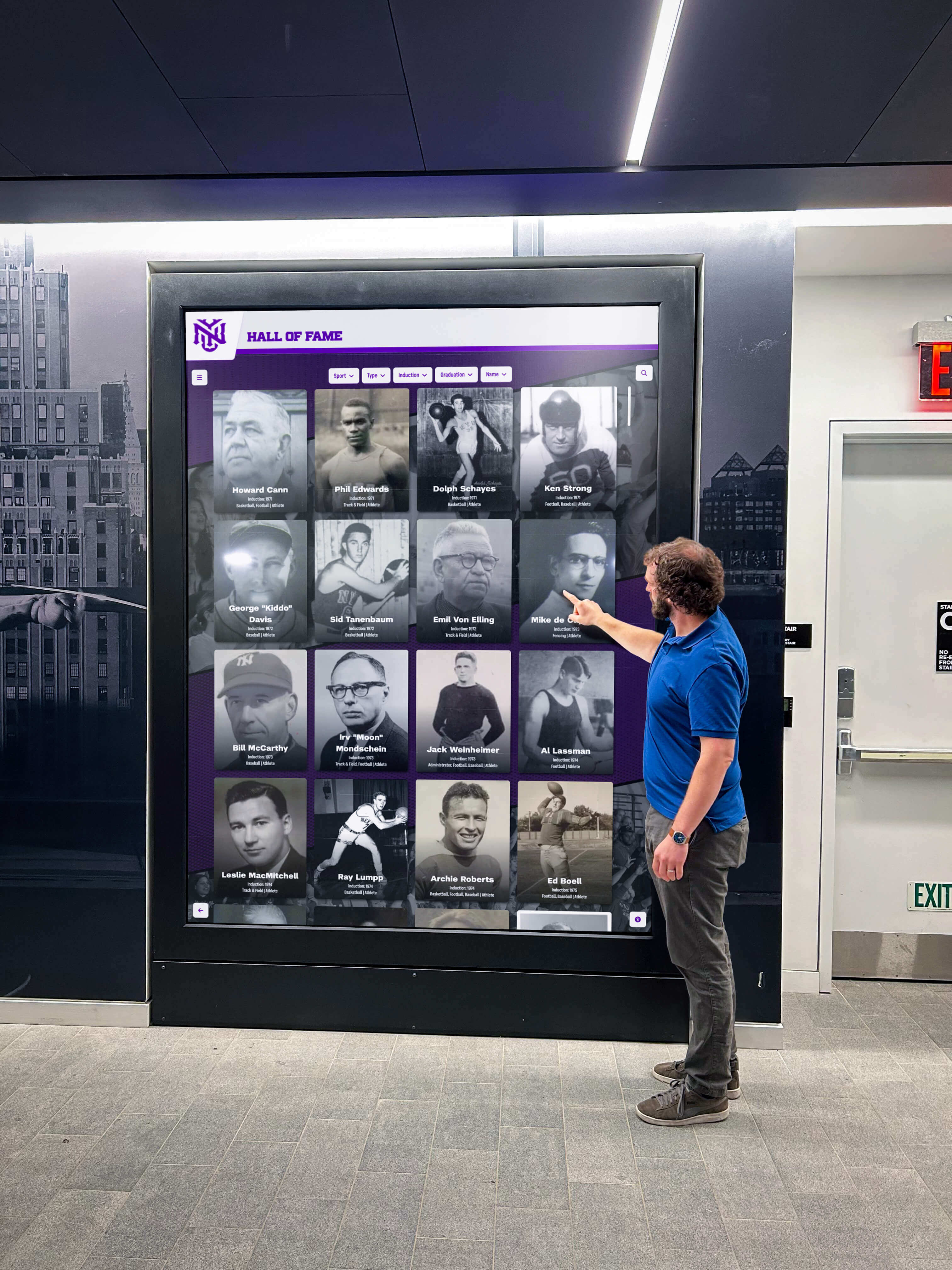
Committee Formation: Assemble diverse planning committee including academic department representatives ensuring subject areas have voice in recognition design, administrators providing institutional leadership and resource allocation, counselors understanding student needs and achievement patterns, technology coordinators supporting digital implementation if applicable, and family representatives ensuring parent perspective influences decisions.
Phase 2: Program Design and Category Development (Weeks 5-8)
Create comprehensive recognition framework celebrating diverse academic achievements while maintaining meaningful standards.
Recognition Category Selection: Based on institutional priorities and student population characteristics, determine which achievement categories to include. Most comprehensive scholastic walls of honor feature cumulative academic performance (valedictorian, honor roll), testing achievement (National Merit, AP Scholar), subject-specific awards across all academic departments, competition success in intellectual contests, research and publication accomplishments, and academic leadership through honor societies.
Ensure category balance represents institutional values authentically. If your school emphasizes STEM education, STEM categories may receive expanded recognition while still maintaining equivalent recognition opportunities in humanities and arts. Avoid unintentional bias where certain departments receive disproportionate visibility creating perception that some subjects matter more than others.
Criteria Documentation: For each recognition category, establish written standards specifying exact requirements, selection processes, nomination procedures if applicable, verification methods, and handling of edge cases or special circumstances. This documentation should live in institutional handbooks, websites, and communications ensuring transparency and consistency.
Schools implementing comprehensive student achievement recognition find that clear criteria reduce perceived favoritism while creating concrete goals students can pursue.
Phase 3: Technology Selection and Content Development (Weeks 9-16)
Evaluate display options and begin comprehensive content creation preparing for successful launch.
Display Technology Evaluation:
Traditional Physical Displays: Engraved plaques, printed certificates in frames, static bulletin boards with name lists. These approaches offer timeless aesthetic appeal and no technology requirements but suffer from space limitations, high per-addition costs, lengthy fabrication timelines, and inability to update easily.
Digital Interactive Displays: Touchscreen kiosks or wall-mounted displays with cloud-based content management. Digital solutions provide unlimited capacity, instant updates, multimedia integration, interactive search, and lower long-term costs but require initial technology investment and ongoing technical support.
Hybrid Approaches: Combining traditional recognition for highest honors with digital platforms providing comprehensive capacity. Many institutions feature engraved plaques for valedictorians and top scholars while using digital displays to honor all academic achievers comprehensively.
Understanding digital versus traditional recognition advantages helps institutions make informed decisions aligning technology with objectives, budgets, and institutional culture.
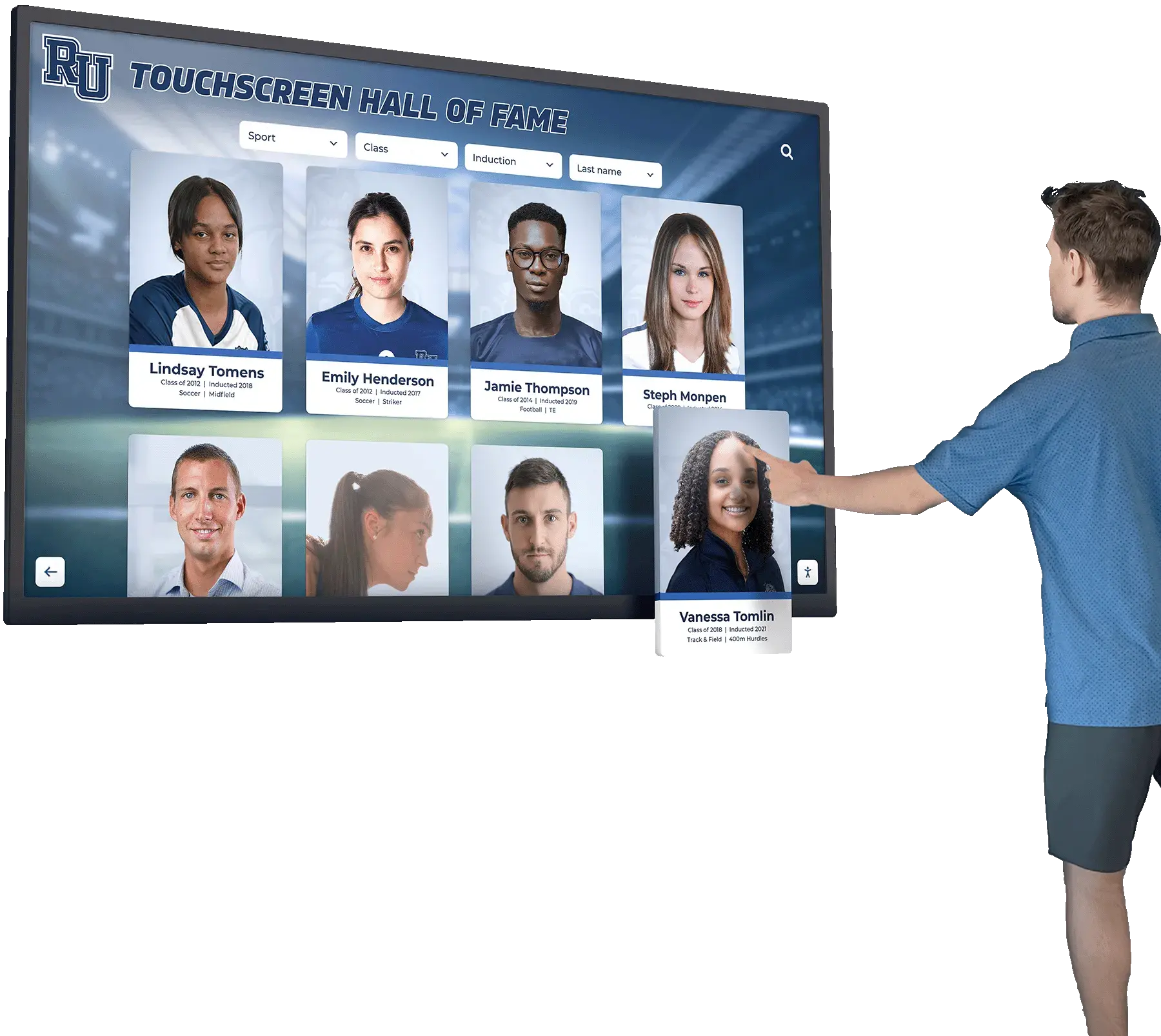
Content Development Process: Compile comprehensive achievement data from school records, transcripts, test score databases, department award histories, and competition results. Cross-reference information sources ensuring accuracy before publication. Collect photos and media assets through yearbooks, school photographers, or dedicated photo sessions. Develop detailed achievement profiles using consistent templates ensuring equity in presentation quality. Establish quality control processes with multiple reviewers checking accuracy and appropriate tone.
This content development phase typically represents the most time-intensive implementation element but creates the foundation for meaningful recognition that honors students appropriately.
Phase 4: Installation, Launch, and Promotion (Weeks 17-20)
Execute professional implementation, train staff thoroughly, launch publicly with appropriate celebration, and promote ongoing engagement.
Physical Implementation: For digital displays, secure professional mounting following safety codes and aesthetic standards, ensure complete network connectivity and system configuration, conduct comprehensive testing before public activation, train staff on content management and system administration, and create documentation supporting independent operation.
Public Launch Strategy: Create excitement through formal unveiling ceremony with student attendance and participation, board members and school leadership engaged in celebration, media coverage extending recognition awareness, promotion through school communications and social media, and demonstration of features encouraging ongoing exploration.
Successful launches generate awareness and excitement while celebrating current honorees, setting positive tone for ongoing program success and community engagement.
Maximizing Educational Impact Through Strategic Recognition
Schools viewing scholastic walls of honor as strategic educational investments rather than passive acknowledgment achieve significantly stronger outcomes through enhanced student motivation and institutional culture.
Student Motivation and Academic Performance
Visible, meaningful academic recognition strengthens student commitment to scholarly excellence by creating concrete aspirational targets, communicating that intellectual achievement matters institutionally, providing role models demonstrating that academic success is achievable, validating effort and perseverance beyond innate ability, and building academic identity as students internalize self-concepts as learners.
Educational research consistently demonstrates correlations between recognition programs and improved outcomes including higher grade point averages among students pursuing recognition, increased enrollment in challenging coursework and advanced programs, improved standardized testing performance, greater participation in academic competitions and enrichment activities, and enhanced college application strength through demonstrated achievement patterns.
These outcomes directly support core educational missions while creating self-reinforcing cycles where achievement leads to recognition leads to increased motivation leads to further achievement.
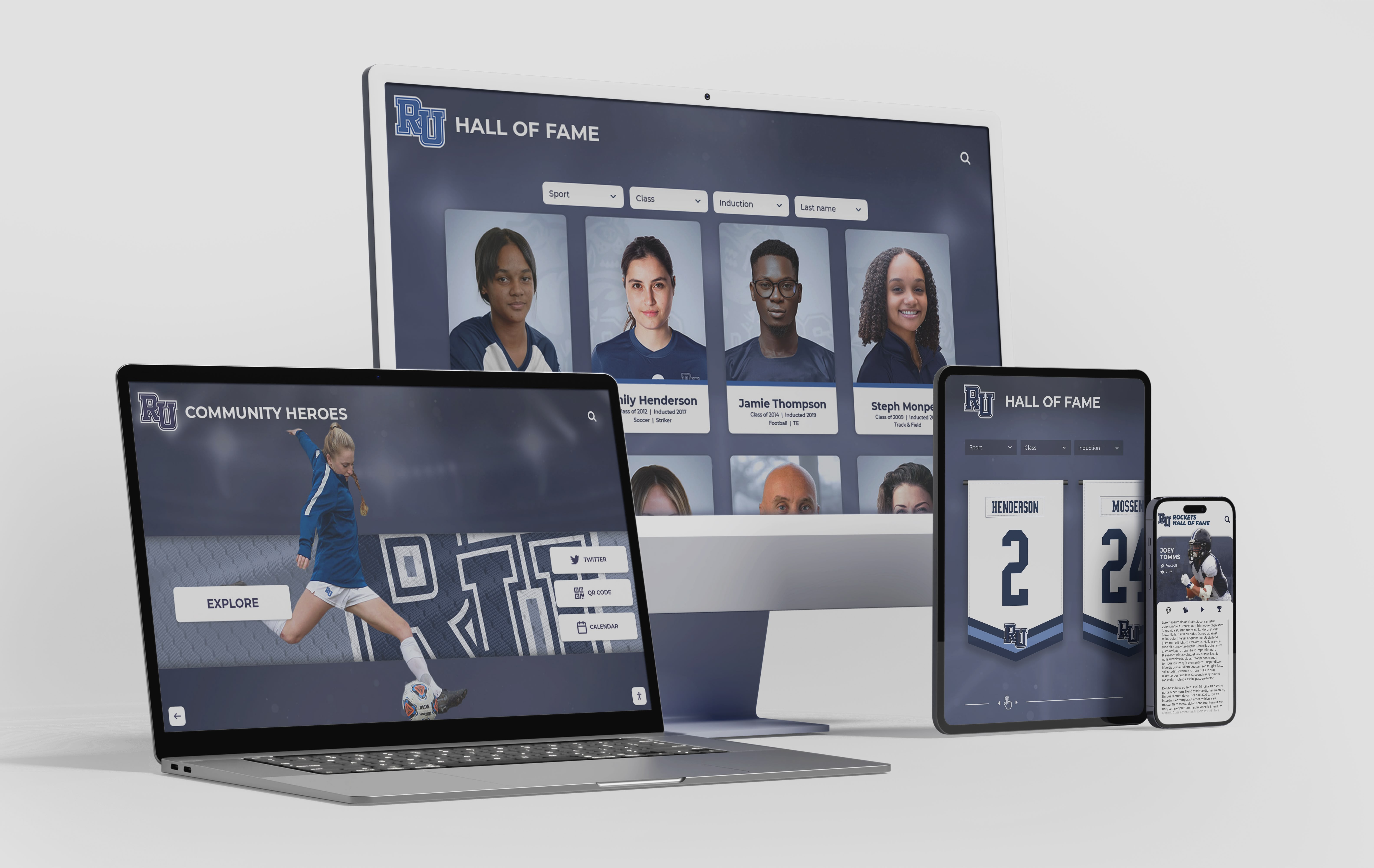
Family Engagement and Community Building
Scholastic recognition provides powerful tools for strengthening family-school partnerships and building supportive communities around educational excellence.
Direct Family Communication: When students earn academic recognition, immediate family notification through personalized letters, phone calls from administrators or teachers, email announcements with achievement details, and social media features (with appropriate permissions) creates memorable moments while demonstrating institutional attention to individual accomplishment.
Ceremony Participation: Recognition events where families attend celebrations, view displays together, take photos commemorating achievement, and connect with educators create shared positive experiences strengthening school-family relationships beyond transactional interactions.
Extended Visibility: Digital recognition platforms accessible from home enable families to explore achievements anytime, share accomplishments with extended family networks, revisit recognition across years, and maintain connections even after graduation.
Educational institutions implementing comprehensive digital recognition systems find that family engagement significantly extends recognition impact beyond brief ceremony moments.
Alumni Connection and Institutional Tradition
Scholastic walls of honor create lasting connections between alumni and alma maters while establishing institutional traditions that strengthen identity across generations.
Historical Continuity: Comprehensive recognition archives documenting decades of academic excellence demonstrate that your institution has consistently produced scholars across eras. Alumni visiting campuses discover their own recognition from years past, reinforcing emotional connections and institutional pride. Current students explore historical achievement patterns understanding they join legacy of intellectual accomplishment.
Mentorship Opportunities: Recognition serves as foundation for alumni-student mentorship connections. Schools can connect current students excelling in mathematics with alumni who earned math departmental awards decades earlier. Subject-specific recognition facilitates targeted mentorship relationships based on shared intellectual interests and achievement patterns.
Philanthropic Engagement: Alumni who feel recognized and valued demonstrate higher giving rates to educational institutions. Scholastic recognition communicates that student accomplishment matters across lifetimes, not just during enrollment. This sustained recognition cultivates relationships that translate to financial support, volunteer engagement, and advocacy.
Content and Design Best Practices
How scholastic walls of honor present information significantly impacts recognition effectiveness and community engagement.
Comprehensive Achievement Profiles
Move beyond bare facts to create compelling narratives celebrating complete academic journeys rather than reducing accomplishments to statistics.
Essential Profile Elements:
- Student name and graduation year
- Specific achievement and recognition category
- Grade point average or achievement metrics when appropriate
- Courses, programs, or subjects of excellence
- Academic competition placements and awards
- Research projects or publications
- Post-graduation educational pathway
- Current career or graduate school attendance
- Connection to teachers or mentors who supported achievement
Enhanced Content Options:
- Professional student photographs
- Quotes from students about their academic experiences
- Teacher testimonials describing student excellence
- Video interviews sharing achievement reflections
- Academic project descriptions or research abstracts
- Timeline showing progression of achievement
- Advice for current students pursuing similar paths
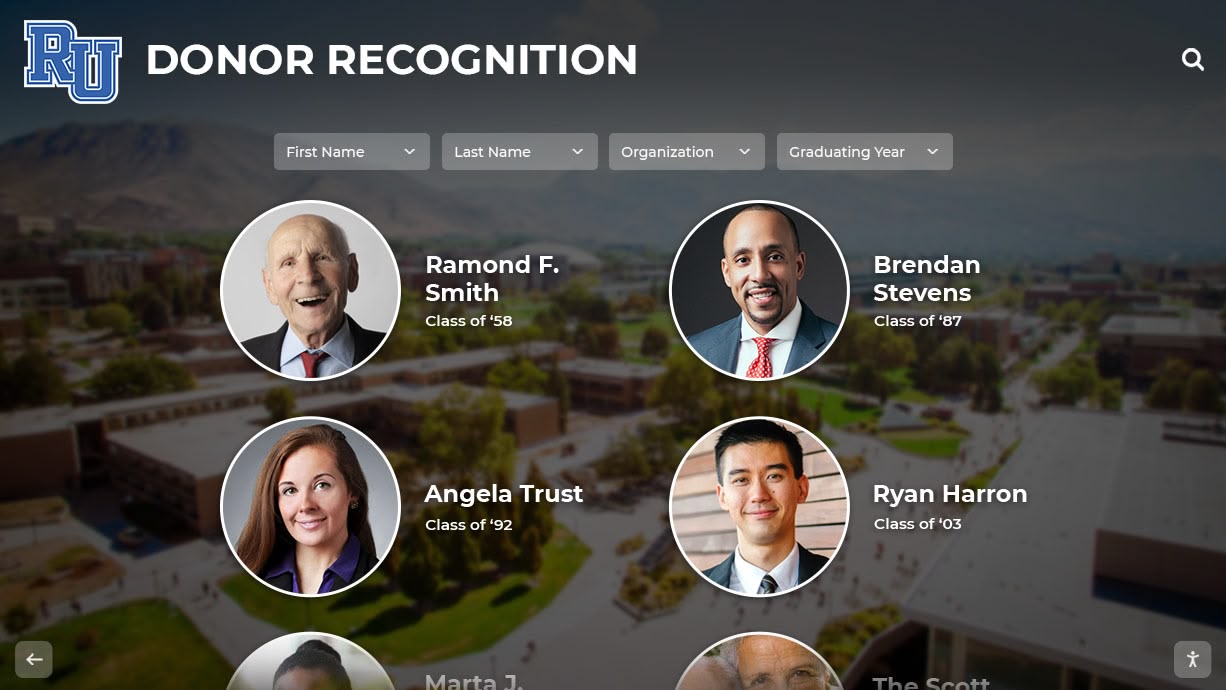
Privacy and Permission Protocols: Always obtain appropriate permissions before featuring students prominently. Follow institutional policies regarding student privacy, photo releases, and personally identifiable information. Provide clear opt-in/opt-out mechanisms for public recognition, especially for achievements involving personal challenges or circumstances. When uncertain, use first names only or request explicit family permission for fuller identification.
Visual Design and User Experience
Recognition displays should invite exploration rather than overwhelming viewers with information density.
Clear Organizational Structure: Organize content by achievement category (honor roll, competitions, subject awards), chronological order (by year or graduating class), or search/filter functionality enabling personalized exploration. Clear navigation ensures visitors can find information relevant to their interests without confusion.
Professional Aesthetic Quality: Whether using traditional plaques or digital displays, maintain consistent professional presentation quality. Amateur-looking displays inadvertently diminish perceived value of recognition. Invest in quality design that communicates achievements deserve serious celebration.
Accessibility Considerations: Ensure physical accessibility with appropriate mounting heights and approach clearances meeting ADA standards. Provide multiple content access modes including visual displays, readable text, and potentially audio descriptions. Use clear, jargon-free language accessible to all audiences including younger students, families, and community members.
For schools implementing digital recognition technology, touchscreen display solutions specifically designed for accessibility ensure all community members can engage with scholastic recognition regardless of physical abilities.
Maintaining Program Excellence Over Time
Scholastic recognition programs require ongoing attention to maintain relevance, accuracy, and value across years and decades of institutional evolution.
Annual Addition Cycles and Content Refreshment
Establish predictable rhythms for adding new honorees ensuring recognition remains current rather than static.
Regular Update Schedule: Most schools operate on annual cycles adding valedictorians and honor roll recipients each graduation, updating subject award winners at year-end ceremonies, incorporating competition achievements as they occur, and adding alumni accomplishments periodically through outreach programs.
For digital platforms, updates happen instantly through software without physical modifications. Organizations should maintain engagement through profile enhancements adding newly discovered information, featured scholar rotations highlighting different students monthly, achievement updates as alumni reach new academic or professional milestones, and thematic collections around institutional anniversaries or special events.
Historical Archive Management: As recognition programs mature across decades, substantial archives develop requiring thoughtful management. Digital systems naturally accommodate unlimited historical content with intuitive browsing and search. Traditional physical displays face space constraints necessitating decisions about archiving or rotating recognition periodically.
Schools implementing comprehensive digital record systems preserve complete historical recognition while featuring recent achievements prominently.
Performance Monitoring and Program Assessment
Track meaningful metrics demonstrating program value and informing continuous improvement decisions.
Quantitative Metrics:
- Total students recognized annually and cumulatively
- Recognition distribution across demographics and programs
- Student participation rates in recognized activities
- Achievement trends showing academic performance patterns
- Engagement analytics for digital displays showing interaction frequency
Qualitative Assessment:
- Student surveys about recognition awareness and motivation
- Faculty feedback on program effectiveness and fairness
- Family perception through communications and feedback
- Observed impact on school culture and academic climate
- Success stories demonstrating recognition influence on trajectories
Use assessment data to report program value to institutional leadership, identify content performing particularly well with audiences, adjust recognition categories based on institutional evolution, demonstrate return on investment justifying continued support, and make evidence-based improvements enhancing effectiveness.
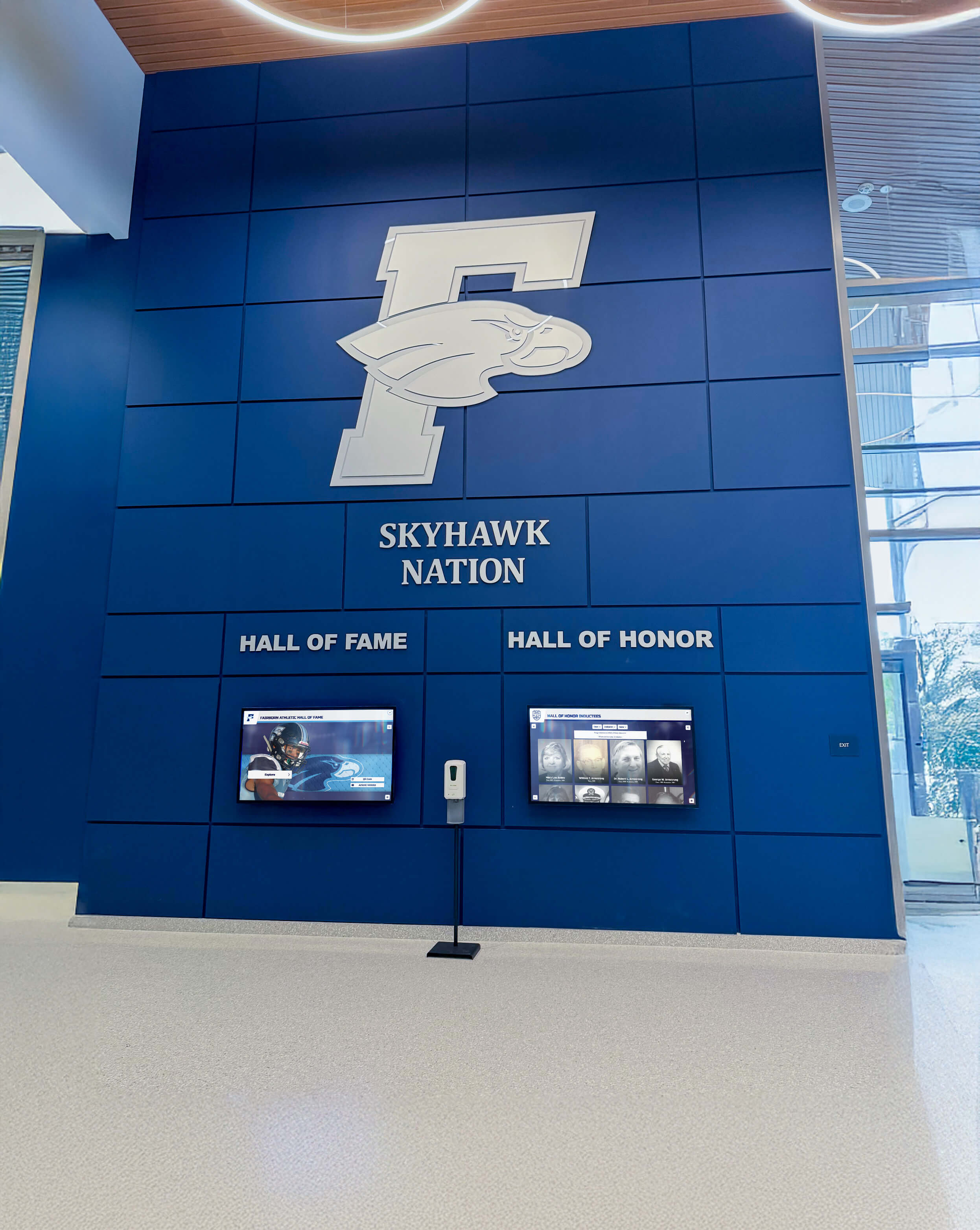
Technical Maintenance for Digital Systems
For institutions implementing digital recognition technology, establish protocols ensuring sustained performance and professional presentation.
Routine Maintenance:
- Regular screen cleaning maintaining professional appearance
- Periodic software updates and security patches
- Hardware inspections and preventive maintenance
- Content backups and disaster recovery procedures
- Technical support access for troubleshooting when issues arise
Most digital recognition systems prove highly reliable with minimal intervention required, but proactive maintenance prevents small issues from becoming significant operational problems that disrupt recognition visibility.
Addressing Common Implementation Challenges
Anticipating obstacles enables proactive problem-solving ensuring program sustainability and community acceptance.
Challenge: Maintaining Fairness Across Academic Areas
Some subject areas naturally produce more measurable achievements than others. Mathematics and science offer numerous competitions while subjects like philosophy or literature have fewer objective external awards.
Solution: Ensure each academic department can nominate equivalent numbers of students for subject-specific recognition. Create internal awards where external competitions don’t exist. Balance objective achievements (test scores, competition placements) with subjective recognition (teacher-nominated excellence) ensuring all disciplines receive equitable celebration.
Challenge: Balancing Excellence Standards with Inclusivity
Recognition programs face tension between maintaining meaningful standards and ensuring achievement feels accessible to diverse student populations.
Solution: Implement tiered recognition systems celebrating both peak achievement and significant improvement. Honor absolute performance through traditional awards while adding categories recognizing growth from different starting points. This approach maintains high standards while acknowledging that excellence takes different forms across diverse student populations.
Understanding inclusive recognition approaches helps schools create systems where standards remain meaningful while opportunity feels accessible.
Challenge: Sustained Interest Beyond Initial Launch
Recognition programs can become routine or overlooked over time as initial excitement fades.
Solution: Refresh content regularly featuring different students or achievement types, connect recognition to current events or campaigns, create special recognition themes for milestone years, incorporate multimedia content adding variety and engagement, and promote recognition consistently through multiple channels maintaining visibility.
Future Trends in Scholastic Recognition
Academic recognition continues evolving with emerging technologies and changing educational philosophies promising enhanced engagement and effectiveness.
Artificial Intelligence and Personalization
Forward-looking recognition systems will incorporate AI enabling personalized content recommendations based on viewer interests, natural language queries for conversational achievement discovery, predictive analytics identifying students approaching recognition thresholds, automated nomination suggestions based on documented performance patterns, and enhanced social integration extending recognition reach through student networks.
Comprehensive Data Integration
Next-generation recognition platforms will seamlessly integrate with student information systems, learning management platforms, and assessment databases for automatic achievement identification, real-time recognition updates as accomplishments occur, reduced administrative burden through automated processes, comprehensive analytics connecting recognition to academic outcomes, and unified platforms celebrating academic alongside other achievements.
Enhanced Accessibility and Reach
Technology enables recognition extending far beyond physical campus displays through mobile applications providing anywhere access, virtual reality experiences exploring institutional achievement history, social media integration amplifying recognition reach, global accessibility for international families and distributed communities, and offline access allowing content viewing without connectivity.
Conclusion: Recognition That Inspires Lifelong Learning
Scholastic walls of honor represent far more than institutional obligation or retrospective acknowledgment—they embody commitments to celebrating intellectual achievement, inspiring academic excellence, and building communities where learning is genuinely valued. When thoughtfully designed with comprehensive categories, fair selection processes, and modern technology, these programs transform educational culture by creating belonging where students who receive recognition feel valued and connected, communicating values through recognition patterns teaching powerful lessons, building motivation as visible celebration inspires students to pursue excellence, strengthening community through shared appreciation of intellectual accomplishment, and promoting equity ensuring diverse student populations experience acknowledgment.
The most effective scholastic recognition systems balance tradition with innovation, honor diverse academic achievements, maintain transparent selection processes, and integrate recognition throughout institutional operations. By implementing the strategies outlined in this guide, schools create sustainable programs that authentically celebrate students while building positive cultures essential for learning and growth.
For educational institutions seeking to enhance recognition capabilities, digital platforms like those offered by Rocket Alumni Solutions provide comprehensive tools for creating engaging, accessible, and expandable scholastic walls of honor. These modern recognition systems ensure programs can scale with student bodies, evolve with institutional priorities, and continue making impact for years to come.
Whether launching new scholastic recognition or revitalizing existing programs, remember that acknowledgment’s power lies not in elaborate displays or expensive ceremonies, but in consistent, authentic messaging that every intellectual achievement matters and deserves celebration. Start where you are, implement thoughtfully, and continuously refine based on feedback and outcomes. The investment in properly recognizing academic excellence yields immeasurable returns in achievement, culture, and community that define educational distinction across generations.
